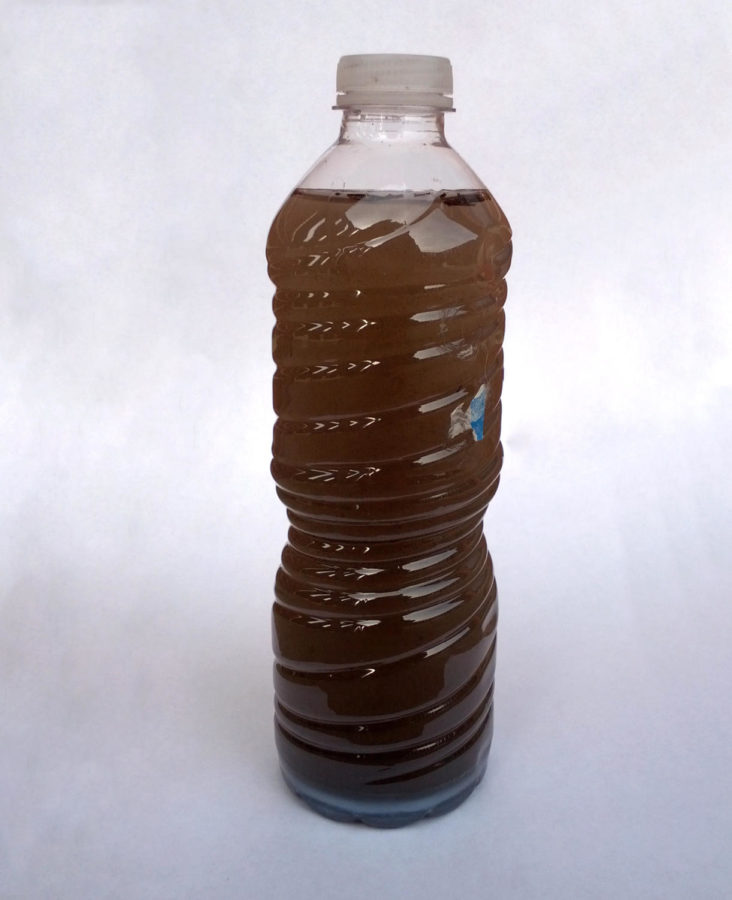Ellingson: Bottled water — what you’re really drinking
Photo: Megan Wolff/Iowa State Daily
Opinion: Ellingson 11/126
November 26, 2012
In general, people love to buy bottled water for several reasons. Some might say the water tastes better. It is cleaner. The bottles are more convenient than cups. It is healthier to drink because there aren’t bacteria in the water, as some worry tap water is unsafe to drink. Bottled water is pure and better for you because it comes from a secret spring of crystal clear waters in some faraway mountain God himself has blessed. The list goes on and on.
But would you still buy bottled water if it wasn’t as clean as you thought?
Because of the increasing popularity of purchasing bottled water, which has doubled in the last decade alone, the bottled water industry earns more than $12 billion by selling approximately 9 billion gallons each year. It has become the second most popular beverage, beaten only by soft drinks. They make a financial killing by selling water, a beverage you could get a lot cheaper, if not for free.
You are basically spending 1,900 times more money for water by buying it in packaged form, and most bottled water is no different than tap water. Sometimes, it is actually worse.
The Environmental Working Group has been on a mission to test various brands of bottled water, and has concluded that many brands often exceed the state’s legal limits of contaminants that are permissible for their product. In a poll taken in 2009, 84 percent of Americans said the availability of clean drinking water is their number one environmental concern and said some sort of action should be taken.
Trace amounts of various contaminants are actually allowed to be in drinking water (both bottled and tap), as long as they do not exceed the legal and health limits. Some include nitrate, arsenic, haloacetic acids, lead, aluminium and trihalomethanes. A few other pollutants commonly found in drinking water include agricultural chemicals and pesticides from fertilizer and manure runoff, and industrial chemicals from products and factory discharge.
As more testing is done, more contaminants have been discovered that are unregulated but the number of tests producing these results has remained at a steady rate.
There is a bit of an unfair double standard for those in the drinking water industry. Tap water consumers are given the results to contaminant testing conducted annually as part of the United States Environmental Protection Agency, but bottled water companies are not required to share their test results because they follow slightly different guidelines through the U.S. Food and Drug Administration.
Several brands, such as Wal-Mart’s Sam’s Choice and Giant’s Acadia, sell water that is identical to tap water in many aspects. You are literally buying the same water you would get out of a faucet at home, only oftentimes more polluted.
Bottled water companies essentially use the image of purity that radiates from its label to give the impression that it is purer than anything you will ever drink from the tap. But the rationale goes unjustified for consumers, since these companies do not have to disclose their contaminant testing results.
Approximately 33 percent of all bottled water contains more contaminants than regular tap water. You might as well be drinking out of a hose if you want the same level of purity. In one case, the Natural Resources Defense Council found out the contents of one bottle that claimed to come from “spring water” actually came from an industrial parking lot located next to a hazardous waste site.
Be smart with your health and money. Water is essential for your survival, so make sure you know what you are drinking and where it is from. You can’t always trust a label.

















